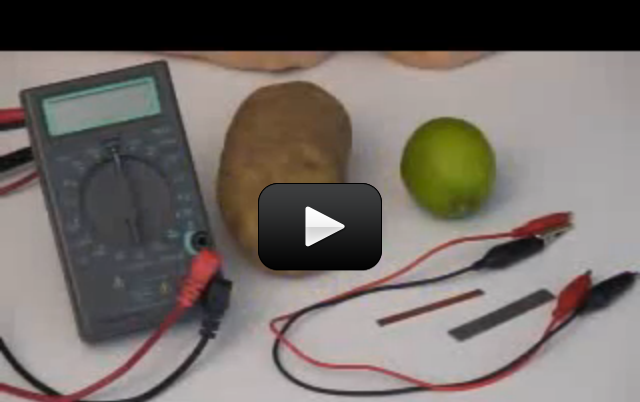This experiment shows how a battery works using electrochemistry. The copper electrons are chemically reacting with the lemon juice, which is a weak acid, to form copper ions (cathode, or positive electrode) and bubbles of hydrogen.
These copper ions interact with the zinc electrode (negative electrode, or anode) to form zinc ions. The difference in electrical charge (potential) on these two plates causes a voltage.
Materials:
- one zinc and copper strip
- two alligator wires
- digital multimeter
- one fresh large lemon or other fruit


What an excellent question! I would get several pieces of the same fruit, in different stages from green to rotten, and perform the experiment to figure out at what stage of “ripeness” that particular fruit yields the highest about of current and/or voltage! Do let me know what you find out!
Can you use a rotten fruit?